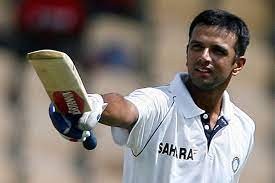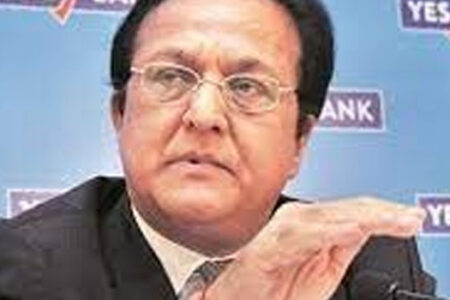Reserve Bank of India (RBI) Governor Shaktikanta Das, a cricket aficionado, wants all who bat on the banking and non-banking turf and the stakeholders to play long term — like Rahul Dravid. That’s his message to the entire financial sector, delivered at this paper’s BFSI Summit in Mumbai last week.
Dravid, often called “Mr Dependable” and “The Wall”, signifies three Cs that are essential ingredients for success — commitment, consistency and class. He stood out for his hard work, never-say-die spirit, and a super-cool temperament against all odds. Governor Das expects these qualities from the players in the financial sector.
The 70-minute fireside chat with him that ended the two-day mega show touched upon quite a few sensitive issues and the governor did not shy away from explaining how the banking regulator looks at them.
For instance, the RBI has been closely watching the business model of banks. A few bankers and sector analysts often wonder whether that’s a regulator’s job. Shouldn’t that be left to the bankers themselves?
The governor’s answer is clear: The RBI doesn’t get down to the nitty-gritty of the business models but it continuously evaluates whether the model is sustainable. For instance, if a bank depends on a mix of just corporate loans and unsecured loans, it could invite trouble for itself. It must have a bouquet of loan products (including home loans, auto loans, two-wheeler loans, et al) to avoid any concentration risks. Similarly, if a bank is into retail loans in a big way and supports that with money sourced from wholesale deposits, it may face problems (interpretation is mine).
The banking sector in India, particularly the private banks, has been finding it extremely difficult to attract and retain talent. In private, a few say, the RBI could be more liberal in clearing the salary and perks of bankers. “Even if we want to pay a handsome bonus to our employees, there are many restrictions,” they say.
The governor is aware of the problem of attrition; he has pointed this out to the banks and left it to them to tackle the HR issue. But he doesn’t agree with the perception of the RBI being not fair in approving the salary and perks of bankers. The salary of the public sector bank employee is typically determined by an industry-wide wage settlement, brokered by the Indian Banks’ Association, while the government norm determines the managing directors’ and executive directors’ pay packages.
The RBI comes into the picture only for the packages of the whole-time directors of private banks. It objects to the proposed package only when it finds it too high for a bank that is too small and/or not doing well. In other words, the perks and salary of top bankers should be in sync with the performance and size of the banks they head.
The governor has made it clear that the regulator is alert and aware of what’s happening in the sector and acts accordingly but doesn’t make noise about that. Why? The explanation is somewhat similar to what Ananth Narayan, whole-time member of Securities and Exchange Board of India, discussed in his speech on the first day of the two-day summit.
He spoke about “Type-1” and “Type-2” errors of a regulator. In this context, “Type-1” errors could be the regulator missing out certain misconducts of banks that are detrimental to their health. If the regulator goes to town with this, it runs the risk of misinterpretation of its action, which could play havoc in the system. After all, banks deal with public money. That’s a “Type-2” error.
Das implicitly said the RBI knows what’s happening in the banking system and takes actions accordingly — but this is done quietly, below the radar. To rectify certain mistakes, it doesn’t want to take steps that can be more disruptive and cause systemic problems.
The governor also emphasised on the importance of governance for a sustainable growth. A bank cannot grow with weak governance, for long.
Kicking off the summit, veteran banker and the uncrowned king of retail banking in India, K V Kamath, highlighted the health and resilience of the banking sector — the best in the past five decades. They are well capitalised and the level of bad loans of the industry is very low. They are also earning good interest income as credit offtake continues to be high.
He pointed out that a committee (headed by Kamath) had recommended restructuring of loans of 26 sectors worth Rs9 trillion post-Covid but only Rs45,000 crore worth of loans were restructured by the banking system as the Indian economy has been on a firm growth path.
The private bank bosses discussed one subject, which has been the talk of the town — should banks become technology companies? Should the techies run them? The consensus is: No.
Banks must remain banks as the business is subject to strict regulations. Beyond technology, which the banks are riding on, banking is all about compliance, underwriting and risk management and trust is the key to the business. Yes, they need to understand technology and use technology to move ahead and that can be done by forging partnerships with fintechs, forming tech subsidiaries or having techies on the pay-roll but a banker must be in the driver’s seat. They also say there is a digital bank within every bank.
Both private and public sector banks feel the good time is here to stay. They don’t agree that there are cracks in retail and unsecured loan segments. Even if there are minor issues, the banks are well equipped to tackle them.
State Bank of India Chairman Dinesh Khara, too, belongs to the same camp. Exuding confidence, he said the country’s largest lender (with little over 20 per cent share of the banking industry) does not have any concern about the quality of assets and is well equipped to face any challenges.
Incidentally, SBI, one of the top 50 banks globally by assets, is readying to roll out version 2.0 of YONO (“you only need one”), its integrated digital banking platform, in nine months. Of its 480 million customers, 70 million are on the YONO platform and 97 per cent of SBI’s transactions don’t happen in its branches. YONO will become a “primary digital bank of choice” in the coming years.
Finally, all banks are aware of the war for deposits that has been on for quite some time now. The assets under management of the mutual fund industry in September rose to nearly Rs48 trillion, one-fourth of the banking industry’s deposit base. The savings community has started exploring different assets to park their surplus money.
But the bankers don’t think offering higher interest rates is the only way to attract money. Bundling products, making the bank a one-stop shop for all financial needs, and caring for customers are the key to deposit mobilisation. Yes, they are talking about customer engagement and not business targets.
Neglected for long, finally the customers seem to be ready to take the centre stage in Indian banking.
This column first appeared in Business Standard.
The writer, a Senior Adviser to Jana Small Finance Bank, writes Banker’s Trust every Monday in Business Standard.
Latest book Roller Coaster: An Affair with Banking
Twitter: TamalBandyo
Website: https://bankerstrust.in



